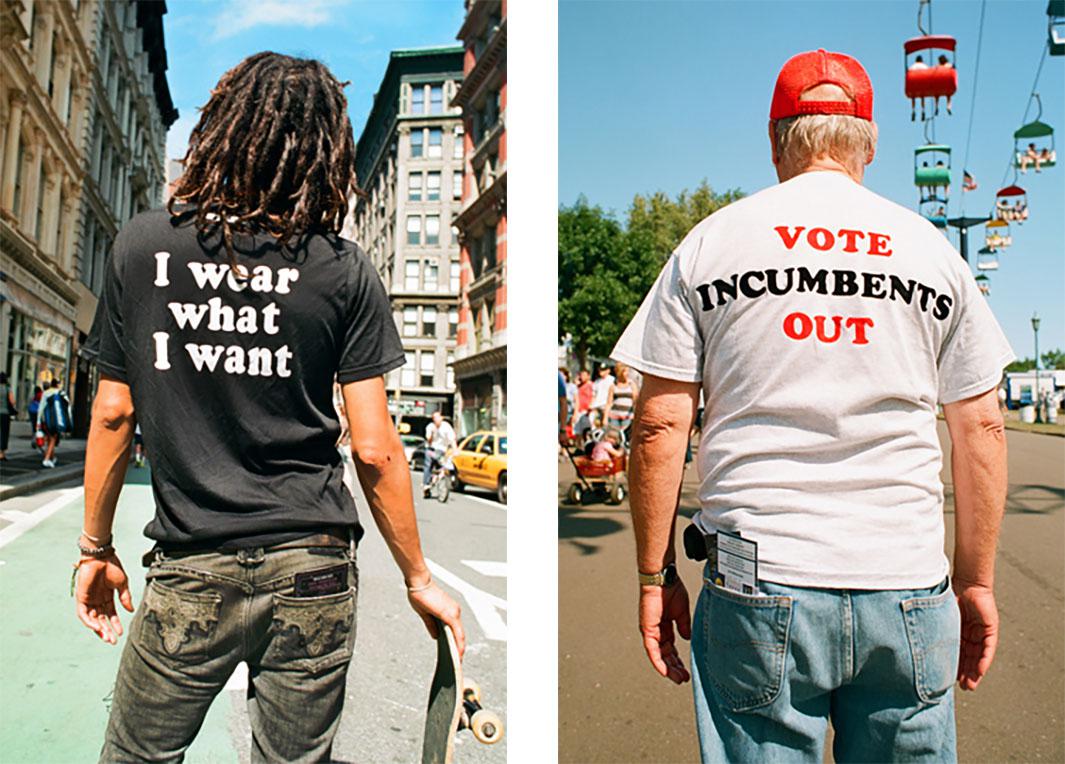Susan Barnett often takes long walks around New York snapping photos of whatever catches her eye. She calls it “sketching with my camera.” During one of those walks six years ago, Barnett noticed a girl. Or rather, she noticed a silk-screened African mask on the back of the girl’s shirt and decided to take a photograph of it. When she developed the roll of film, filled with shots of playgrounds and street scenes, that image stuck out to her.
“I realized I was looking at her back, and yet it was a portrait,” Barnett said. “I knew a lot about her from the indicators on her back … and yet I knew nothing about her.”
Ever since, Barnett has been photographing the backs’ of strangers around the world, collecting “a typology of how we communicate and identify with one another through what we wear.”
Barnett was a student at Marymount College in the midst of the Vietnam War era and was drawn to slogans like “Hell no, we won’t go” that were used in protests. “I made posters and silk-screened T-shirts,” she said. “That was really when I discovered the T-shirt … as a means of communication; they’re billboards that allow people to use their clothing as a source of identity to let us know certain things about them.”
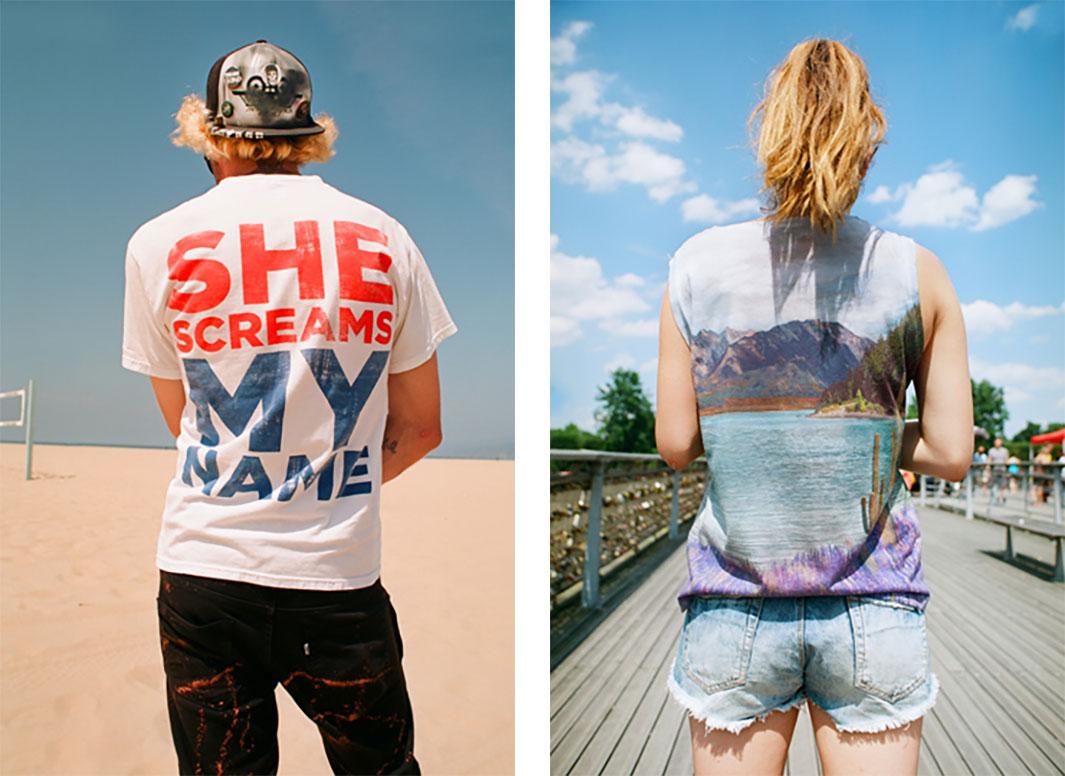
Susan Barnett
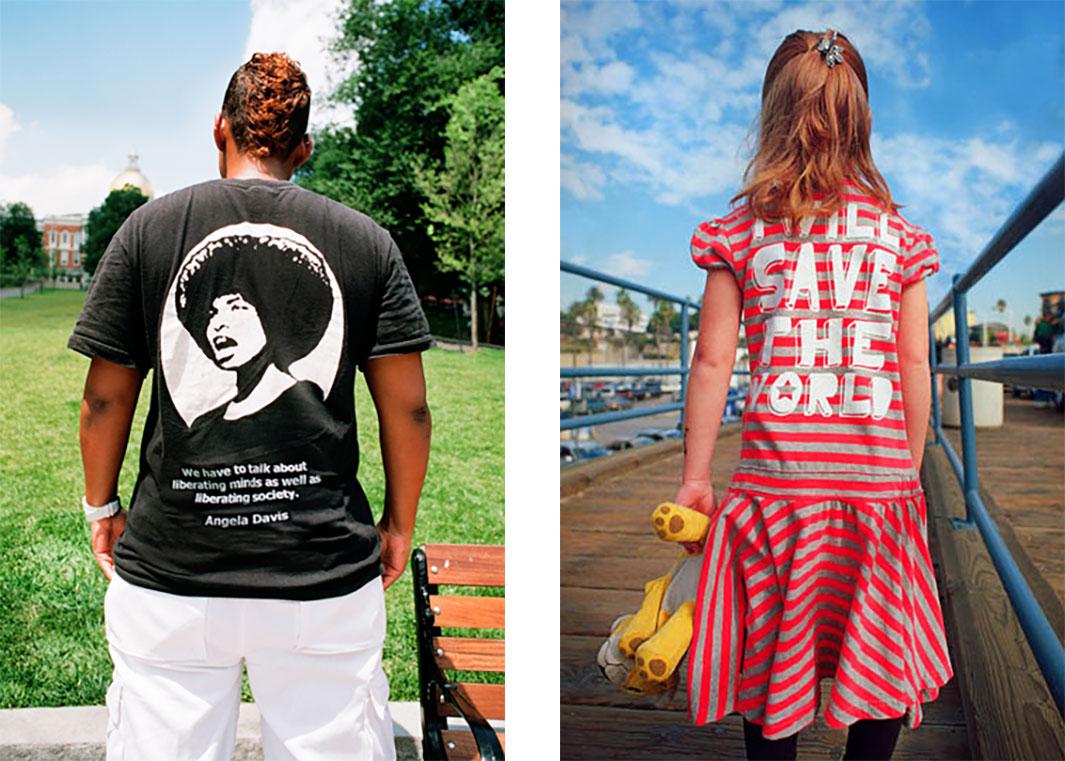
Susan Barnett

Susan Barnett
When she first started photographing T-shirts for the series almost four decades later, her vision of the images mirrored her history with slogans. She created tightly cropped images that highlighted the messages written on the back of the shirts. The more she photographed, the more she began to see the series in a different way and started to include a larger part of her subjects’ bodies and the environment in which she approached them on the street. It’s part of her ongoing quest to redefine what a portrait is, especially in light of how faces have become a necessary part of them.
“When we look at the pictures from behind, it’s kind of a shorthand, and you get to make different decisions about it,” she said. “It’s also about how we judge each other. There’s a split second when you look at somebody when things just add up and depending on who you are and your own baggage, you make a judgment.”
Barnett has more than 2,000 images so far, and earlier this year Dewi Lewis published a collection of her photographs as a book, T: A Typology of T-Shirts.
Over the years, Barnett has noticed a few consistencies about the subjects she photographs for the project. Often, although she’s asking people to turn around when taking their portrait, they smile. Partly out of habit perhaps, but also because Barnett says most people tell her they’re thrilled she noticed them.
“When they put these shirts on in the morning, it’s a cry in the dark, please notice me,” she said. “They put it on not in the front where the message usually is; these are on the back so they’re really screaming for attention … I really respect these kids who pose for me because they get into it, they want their message out there, and they think it’s flattering that they are being validated … the majority say I’m so glad you’re doing this.”
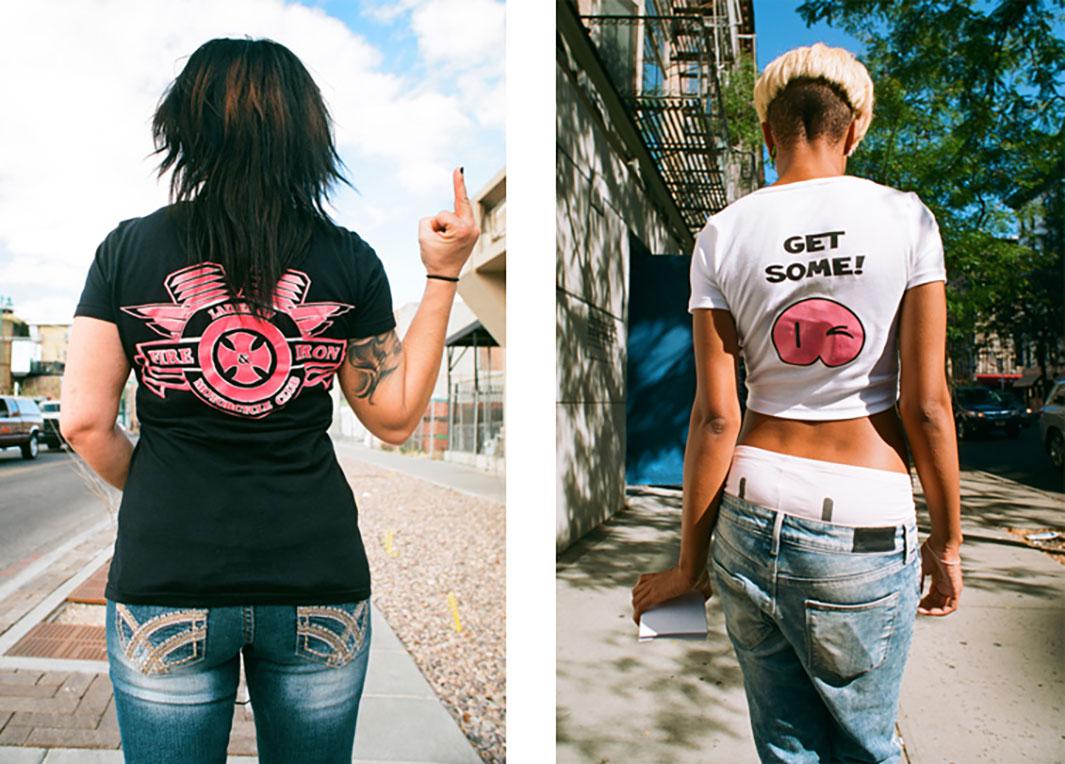
Susan Barnett
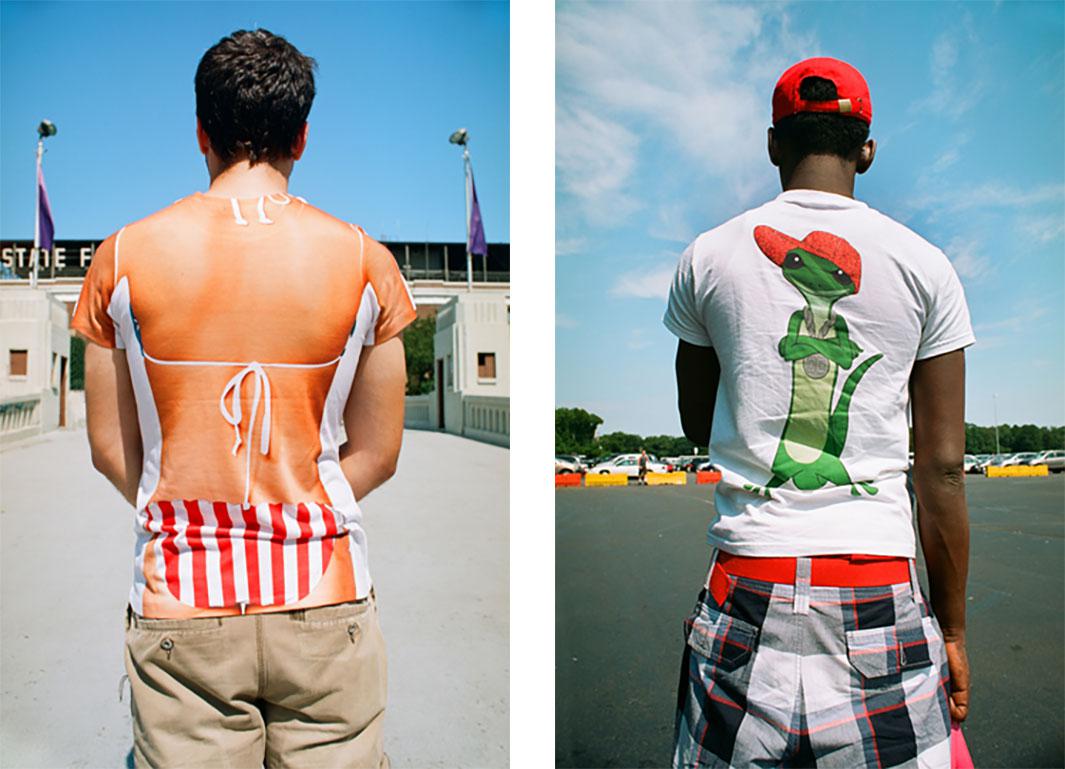
Susan Barnett
